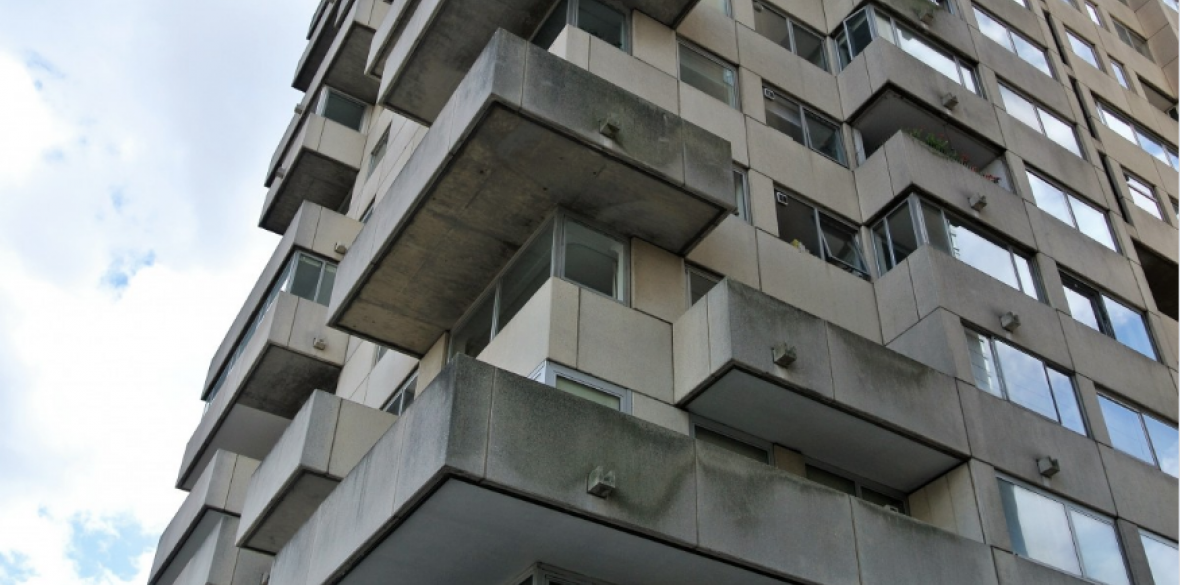This is the last article you can read this month
You can read more article this month
You can read more articles this month
Sorry your limit is up for this month
Reset on:
Please help support the Morning Star by subscribing here
SOS Brutalism: A Global Survey
Edited by Oliver Elser, Philip Kurz and Peter Cachola Schmal
(Park Books £39)
THE TERM brutalism creates disparaging associations in English — it is diametrically different in meaning from Le Corbusier’s initial usage of “beton brut” meaning “raw concrete.” British critic Reyner Banham coined the glib misnomer in his study of concrete architecture The New Brutalism and it has become a shortcut for heaping scorn.

But the editors of this book eloquently and effortlessly cross the boundaries between academic reflection and popular inquiry to engage readers in a survey of brutalist architecture from the 1950s to the 1970s as a globalised phenomenon inspired by eminent architects with an uncompromising and revolutionary attitude to design and function.
Key buildings in 12 regions around the world are shown for the first time, often through spectacular photography. A supplement of papers presented at an international symposium on brutalism in architecture held in Berlin in 2012 is a fascinating read in itself.
The book evidences the richness and diversity of the brutalist style — its breath-taking achievements as well as its glorious and, in some cases, embarrassing failures.
The lively Gosstroy residential building in Baku, Azerbaijan by A Belokon and V Sulimova, or the symmetric angularity of the Sports Palace in Phnom Penh by V Molyvann catch the eye, as does the minimalist elegance of the Ferdowsi Museum in Tus, Iran by H Seyhoun and the lego-like Ministry of Highways, Tbilisi, Georgia by G Chakhava and Z Jalaghania. Closer to home, the Alexandra Estate in London by Neave Brown is a joy to behold.
But the fascinating La Pyramide in Abidjan, Ivory Coast by R Olivieri appears to loose its way at the top and Banco Hipotecario in Buenos Aires, Argentina by the legendary Clorindp Testa disappoints — despite its spectacular central staircase — as does the squat, battleship-like Institute for Experimental Medicine in Berlin by G Hanska.
Readers will have their favourites among the countless housing estates, libraries, universities, halls of residence, churches, public administration buildings and sports arenas and, hopefully, be persuaded to engage in a “globalised” watch over them. The book's title encapsulates its aim of raising awareness of the cultural heritage inherent in those buildings, as well as the all-important legacy they articulate of an architecture not for profit but for social purpose.
A worrying number of these structures face neglect or imminent threat of demolition or reconstruction that would change their appearance beyond recognition and quite a few are no more.
Hence #SOSBrutalism is as much a “live” database/register of well over 1,000 buildings — new ones are being added all the time — as a distress signal.
More importantly, it's a platform for a wide campaign of mobilisation to save as many of those under threat as possible. It can be accessed directly at sosbrutalism.org or on Twitter, Instagram and Tumblr.
Brutalist architecture is a legacy of a different time, a witness to an epoch when making the world into a better place was on the political agenda globally — it articulates aspirations that were, and still are, shared by the many but opposed by the greed of the few.
By protecting it, we also protect our future from the reductionist onslaught of neoliberal vulgarity and degradation.












